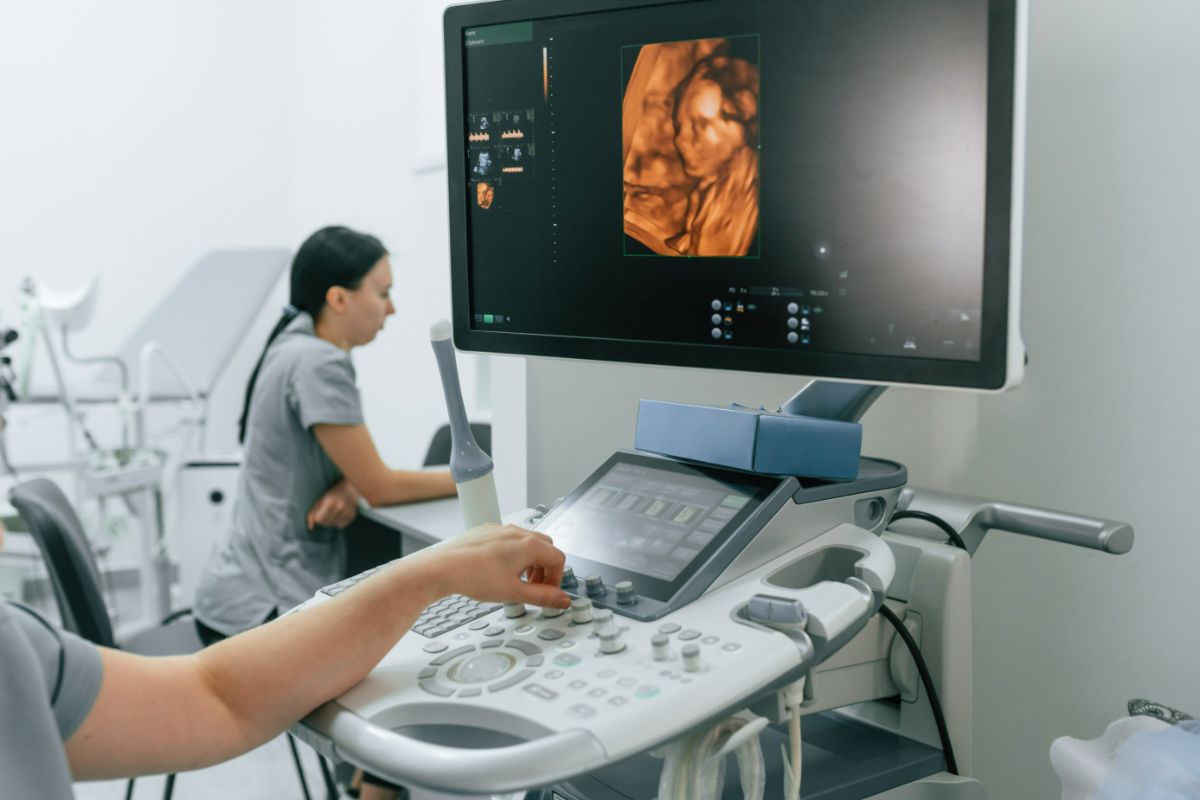What are the different types of ultrasound, and when are they used?
- Abdominal ultrasound
- Obstetric/pregnancy ultrasound
- Breast ultrasound
- Renal ultrasound
- Echocardiogram
- 3D ultrasound
- 4D ultrasound
Overview
- From abdominal and obstetric ultrasounds to specialized scans like echocardiograms, explore how these imaging techniques help diagnose and monitor a range of health conditions.
An ultrasound is a medical imaging technique that uses sound waves to create real-time images of the inside of the body. It’s a non-invasive and safe method that allows healthcare professionals to visualize and assess various organs and structures.
Ultrasound is crucial for diagnosing and monitoring a wide range of medical conditions, with its varied kinds tailored to specific healthcare needs. In this article, let us dive into the common types of ultrasounds and when they are used. From abdominal scans that examine internal organs to obstetric ultrasounds essential for monitoring pregnancy, each type serves a unique purpose in healthcare.
Abdominal Ultrasound
An abdominal ultrasound is a simple and noninvasive medical procedure that helps doctors see inside the abdomen. It uses sound waves, too high for us to hear, to create images of organs like the liver, gallbladder, and pancreas. During the procedure, a device called a transducer is placed on the skin, and the reflected sound waves are turned into pictures by a computer.
Abdominal ultrasounds are used when doctors need to look at the organs in your belly to check for things like cysts, tumors, or infections. It helps measure the size of the abdominal aorta and detect issues like gallbladder stones.
Obstetric/Pregnancy Ultrasound

Obstetric ultrasound is a safe and painless medical procedure that uses sound waves to create images of a developing baby, as well as the mother’s uterus and ovaries during pregnancy. This imaging technique, also known as sonography, provides valuable information without using ionizing radiation, making it the preferred method for monitoring pregnant women and their unborn babies.
This procedure is commonly used during pregnancy to confirm the presence of a living embryo/fetus, estimate pregnancy age, diagnose congenital abnormalities, assess fetal and placental positions, determine multiple pregnancies, check amniotic fluid levels, examine cervical changes, and monitor fetal growth and well-being.
Breast Ultrasound
Breast ultrasound is an imaging test that uses sound waves to create pictures of the inside of the breasts. A wand-like device called a transducer is moved over the skin to produce images, helping healthcare providers identify breast problems and assess blood flow in the breast tissue.
This method is typically used when there is a change observed on a mammogram or when a change is felt but doesn’t show up on a mammogram. It is often employed to determine if a breast abnormality is a fluid-filled cyst or a solid tumor. Additionally, it may be used to examine lymph nodes, guide biopsies, or remove fluid from a cyst.
Renal Ultrasound

A kidney ultrasound, also known as a renal ultrasound, is an imaging test that utilizes sound waves to create detailed images of the kidneys and bladder. This painless and non-invasive procedure helps healthcare providers assess the structure and function of these organs without using radiation.
Kidney ultrasounds are commonly used when healthcare providers need to examine the right and left kidneys, as well as the bladder, to diagnose various medical conditions. This test is especially useful for assessing the filtration system of the body, detecting blockages in blood vessels, and evaluating conditions such as kidney stones or urinary tract issues.
Echocardiogram
An echocardiogram, also known as a heart ultrasound or heart sonogram, utilizes sound waves to create detailed images of the heart. This non-invasive test provides valuable information about blood flow through the heart chambers and valves, aiding healthcare providers in diagnosing heart diseases and other cardiac conditions.
The technique is commonly used to look for heart problems, especially when individuals experience symptoms such as chest pain or shortness of breath. The test is ordered by healthcare providers to assess blood movement within the heart, detect changes in heart size, evaluate pumping strength, identify heart valve disorders, and diagnose congenital heart defects.
3D Ultrasound

3D ultrasounds use high-frequency sound waves and advanced imaging software to create clear and detailed images of a developing baby’s soft tissues, organs, and anatomy. The technology has significantly improved the quality of ultrasound imaging, providing realistic, photo-like representations of the fetus.
While the demand for 3D ultrasounds has increased for parents seeking a more intimate view of their baby, medical professionals may recommend them when additional clarity is needed for diagnosing potential defects, such as cleft lip, cleft palate, craniofacial abnormalities, neural tube defects, and skeletal malformations.
4D Ultrasound
A 4D ultrasound is an imaging technique that displays live-streaming video images of a developing baby in the womb. Similar to 3D ultrasounds, it provides a detailed view of the baby’s facial features, movements, and body parts, offering a more dynamic and lifelike representation.
4D ultrasounds are not medically necessary for routine pregnancy checkups, as a normal 2D ultrasound is typically sufficient. However, expecting mothers may opt for it during the second trimester, around 22 weeks into pregnancy, for entertainment purposes and to capture live video images of their baby’s features and movements.
Key Takeaway
Recognizing the importance of the different types of ultrasounds and when they are used is crucial for navigating different facets of healthcare. This non-invasive and secure imaging method plays a vital role in diagnosing and monitoring a broad spectrum of medical conditions.
For comprehensive ultrasound services, consider Perpetual Help Medical Center – Las Piñas City. With state-of-the-art technology and experienced professionals, they ensure accurate and reliable imaging for your healthcare needs. Schedule your ultrasound appointment today by contacting us for proactive health management.

